Network Acoustics MUON Pro Ethernet Filter
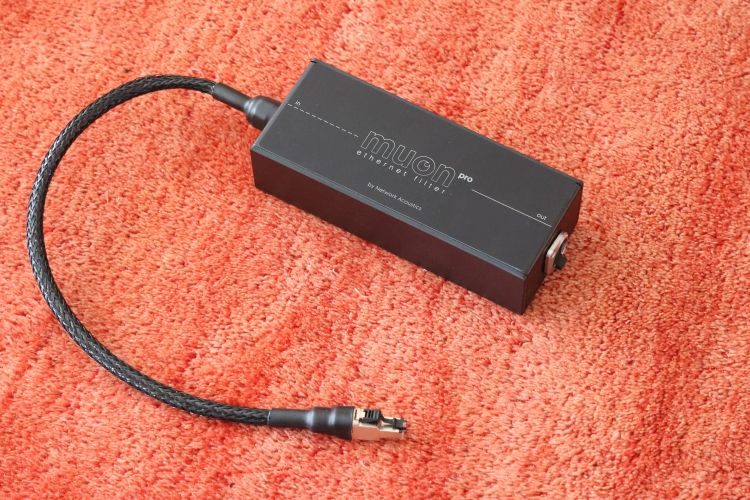
Review sample supplied by Network Acoustics
Retail Prices (ex VAT):
muon Pro Ethernet Filter 1.329 UKP (approx. 1.500 euro)
muon Pro Streaming System (incl. muon Cable) 1.829 UKP (approx. 2.084 euro)
Prologue
I’ve long been of the opinion that Music Servers, as good as they are in many facets of music reproduction, could often not fully compete with state-of-the-art CD playback in some facets. These facets are soundstage depth, the sense of the music breathing freely, and the overall flow. As time passed and more servers auditioned, I must add that some actually do race neck and neck with the best CD transports out there when it concerns the aforementioned facets. Some even go well beyond this, although it’s often a case of the balance being thrown off in a different direction, a server excelling in certain aspects and not so much in others. It’s the way of life, I guess.
Of course, CD playback is no substitute for the huge comfort of having the world’s music collection at your fingertips when using a music server, especially when the server runs Roon. It’s just so utterly convenient. And, clearly, I am not alone in this. Since we’ve massively embraced music servers and streaming, it’s important to address the potential for noise to enter the system since this is a large determining factor for the performance of a server or streamer. And this is where the subject of this review comes in.
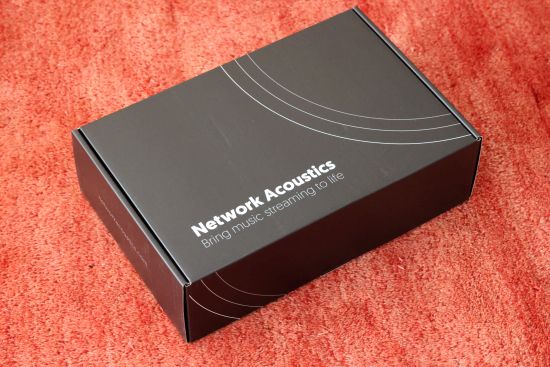
muon Range
muon is Network Acoustics’ reference range of digital cables and filters. With muon, the company took a zero-compromise approach, from the product design to the choice of materials, components, and processes used to manufacture. Each product in the muon range features the latest proprietary noise filtering technology, combined with cutting-edge design.
Handmade in the UK and individually tested against the original reference product, each muon product is sold with free worldwide shipping, a 30-day “try-it-at-home” money-back guarantee, and a 2-year warranty.
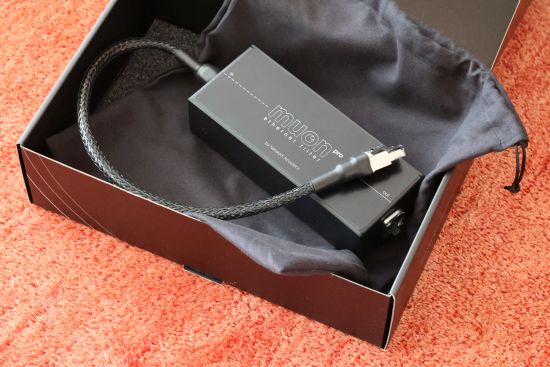
muon Pro Ethernet Filter
Developed around the company’s latest proprietary noise filtering technology, the muon Ethernet Filter is a passive system designed to filter out problematic electrical and radio frequency noise that would otherwise be delivered via the ethernet cable along with the data into the sensitive audio equipment.
As Network Acoustics simply puts it: this noise, if not filtered out, causes degradation in sound quality.
For this purpose, the company has created the muon Pro Ethernet Filter. Unlike some other filtering systems, the muon Pro allows a full 1GB per second bandwidth. While the audio data itself does not require such an enormous bandwidth, and some companies purposely limit the bandwidth for this reason, it is my experience that Roon runs most seamlessly if it has the full bandwidth to work with.
The filter has a fixed 50cm-long cable on its input side which should be connected to a router or switch. The filter’s output side has a Neutrik RJ-45 connector to which the user can connect the intended server or streamer using a Network Acoustics muon Network Cable or any other network cable of your choosing. For this review, I will be using my standard Cat6 S/FTP cables in all cases to enable easy comparisons between the standard- and filtered situations.
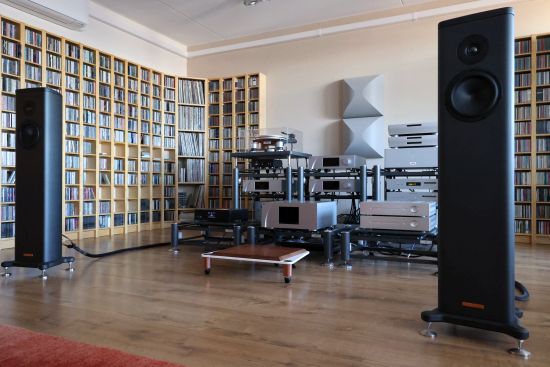
Review Context
The muon Pro Ethernet Filter is assessed in the main system that consists of the CH Precision C1.2 DAC, CH Precision L1 preamplifier, CH Precision A1.5 power amp, and Magico S1 MkII speakers. Digital sources include the Grimm MU1 and Antipodes K41+K22 Music Servers (all running Roon) the Taiko Extreme Music Server (running proprietary XDMS Alpha server/player software), and the Aqua LinQ network interface (running HQPlayer). In addition to the Magico speakers, I will also be using Seawave Acoustic Aletheia III and AM23 loudspeakers which are currently also being reviewed.
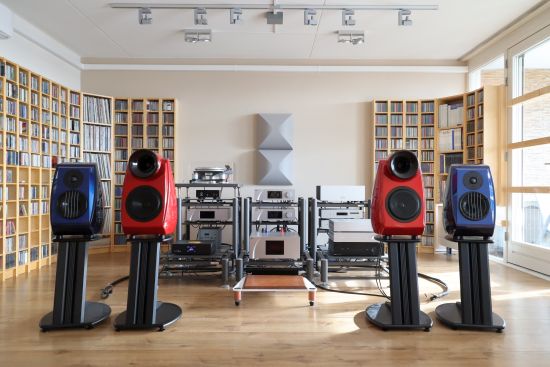
Listening
The first Music Server that I tried with the muon is the Grimm MU-1. This is my current favorite server at this price point and it does most of what I find important very well. For instance, it is very fast and articulate, with great transient behavior, combined with a lot of finesse and great neutrality. It is not perfect, though. Compared with the best CD transports that I have heard, it remains slightly less immediate and expressive, and like many servers, it lags behind where it concerns the aspect that most CD players and transports seem to do so easily: the breathing within the soundstage and the natural flow of the music. In comparison, the Grimm can be a little restrained and matter-of-fact. It’s not an insurmountable issue stopping me from enjoying the music but the difference is there.
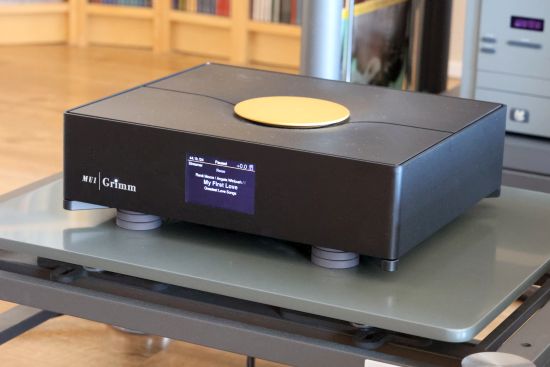
Knowing a thing or two about filters, my prime concern when adding the muon was that it should not inhibit the Grimm’s natural strength: its transient behavior. But to my relief, the pacing and speed are not affected. Ok, the transient peaks are subjectively subtly rounder (or less “edgy”, depending on the view) but this is relative, as many CD players and transports also sound less spritely and “attacky” than the MU1. So, which perspective is the actual natural portrayal?
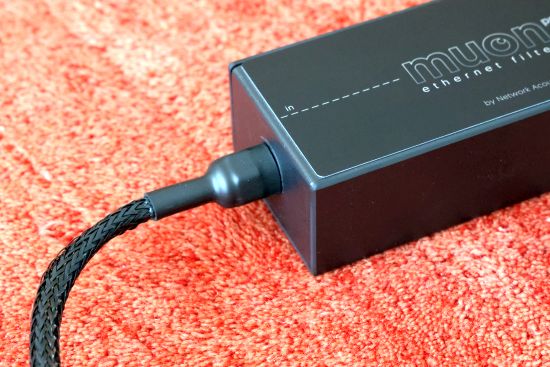
More importantly, what you get in return seems to defy common sense. While it is normally very easy to pick the server in a blind comparison with my best CD transport, the MU1 + muon now resembled the CD transport so closely that it took multiple switches to and fro to point out the differences! Seems like faint praise? I think not. What the muon enables the Grimm to do is sound utterly liquid and fluid, more refined, more free-breathing, more spacious, topped off with a noticeably deeper soundstage. Oh, and the staccato effect is gone and there is not even a hint of dryness. All of a sudden, all the notes are connected and the server sounds fully continuous.
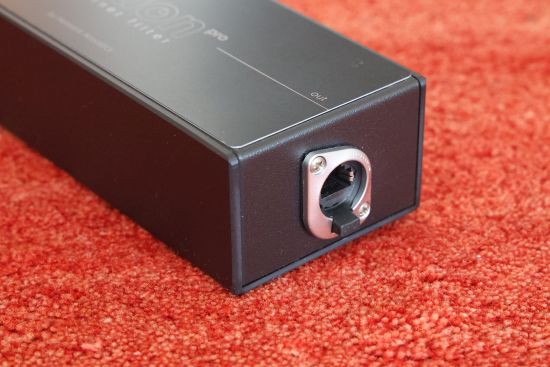
Next up was the Antipodes K22 used integrally, as a server and player. Antipodes servers in general excel in terms of solidity, tonal saturation, and wide and deep soundstaging. With that in mind, you’d think that this server has no need for the muon, right? Indeed, the K22 already sounds very spacious and involving, but sure enough, adding the muon makes it sound considerably more spacious, but also smoother, more liquid, and more organic. These improvements turn out to fit the unit well. Used as a server/player, the K22 is not as fluid, lush, and refined as the K50 or the K41+K22 combo, but you guessed it, the muon removed any residual dryness and upped the liquidity, resulting in a sound that’s robust yet seductively lush.
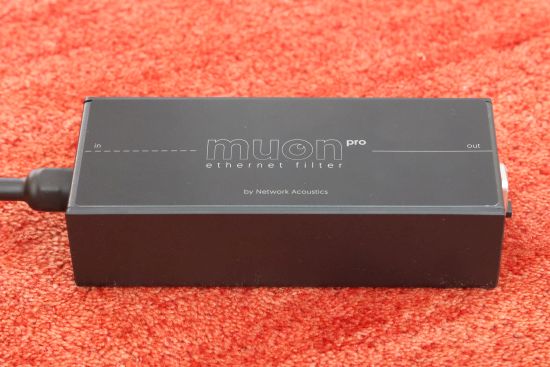
The next test was to add the muon when using the K41 and K22 as a server + player combo. Together, they manage a solid, deeply saturated, lush, and beautifully organic delivery, along with all the aspects the K22 on its own does so well. In this case, I connected the muon between the Cisco switch and the K41 server and looped the K41 to the K22 via the Direct Stream connection. Again, given the server-player combo’s natural strengths, one might question the usefulness of adding the muon. But sure enough, while the combo is clearly less “in need” of a muon, adding it makes the combo sound even more spacious, even more continuous, and even more seductive, if slightly less articulate and incisive.
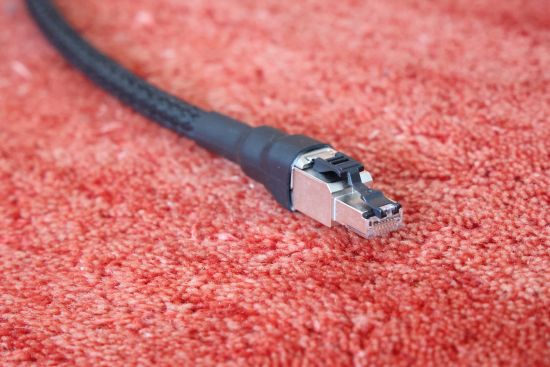
The Aqua LinQ is sonically similar to the Grimm MU-1 in that it is very neutral and uncolored but it deviates with an even more solid and robust stance. It has more solid bass, a more expressive midrange, and a hugely propulsive delivery. More so than the Grimm, it has a tendency to sound a little dry. For this test, I used the Grimm MU1 as a server running HQPlayer in Roon. Roon then streams via my regular Cisco network switch to the Aqua LinQ that also runs HQplayer. In this case, the stream is not Roon’s own RAAT protocol but rather HQPlayer’s NAA.
Incidentally, the LinQ has a proprietary single-port switch on-board which provides an extra degree of isolation. But even though I had found the differences between ethernet cables to be reduced when used with the LinQ, the addition of the muon between the Cisco switch and the Aqua LinQ sure has a rather large impact. Once again, the soundstage blossomed and the dryness vanished, replaced with a high degree of fluidity and refinement, yet with no decrease in speed or expression.
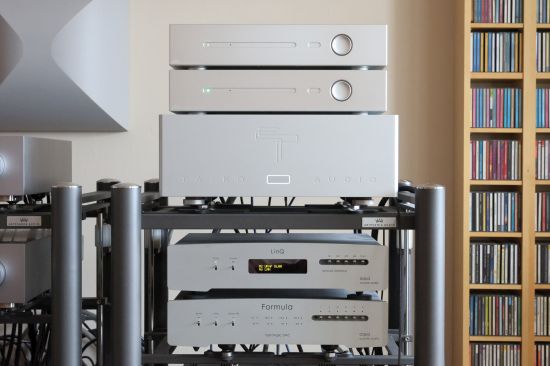
Finally, I turned to the Taiko Audio Extreme. It should be noted that battling the influence of external noise was a major note in its design brief. So, I wondered, how would it react to the muon? As it turns out, the muon has an impact on the Extreme as well. But in this case, the result was indeed a little different than with the other servers and players. With the muon in place, the soundstage did not change much and there was no increase in fluidity or flow, but the server now sounded warmer, sweeter, rounder, and more intimate. It had traded a degree of tightness, expression, and crispness for a lusher and more romantic approach. This was not so much an improvement but more a change in perspective that some may prefer. But in my system, I preferred the Extreme connected directly to the switch.
This just goes to show that while the muon works superbly well across a wide range of servers/streamers, as always, obtaining the ideal sound in a given system remains a balancing act. But with the 30-day “try-it-at-home” money-back guarantee, there is no risk.
Conclusion
The Network Acoustics muon can be a real lifesaver. By filtering out electrical and radio frequency noise that would otherwise be delivered via the ethernet cable along with the data into the sensitive audio equipment, it manages to make the music sound consistently more spacious, more free-flowing, more liquid and continuous, and more refined. In doing so, it addresses many of the differences between state-of-the-art CD replay and music servers in general. Importantly, while it is more beneficial with some servers than with others, it has proven to work well with a wide array of servers/streamers.
External Links
Manufacturer: Network Acoustics
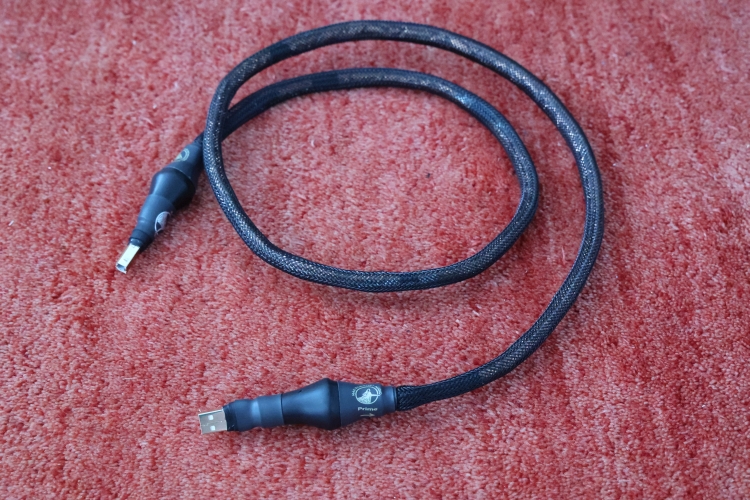
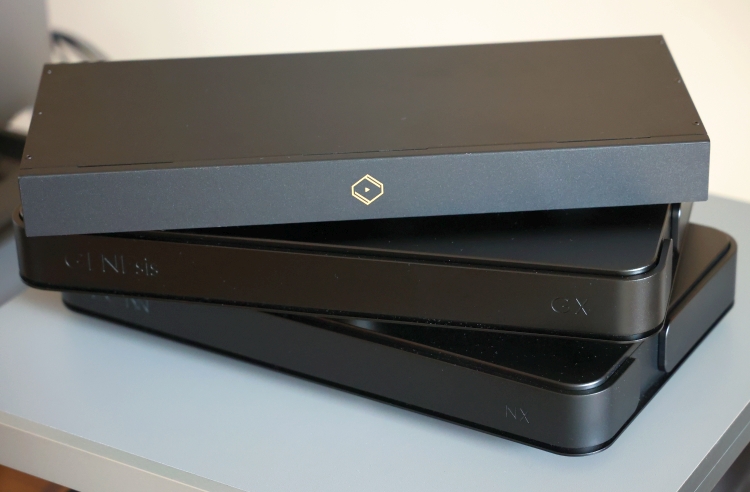
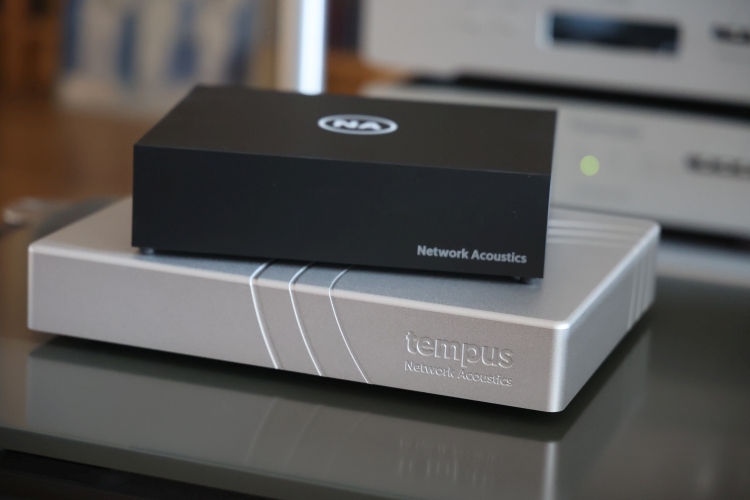


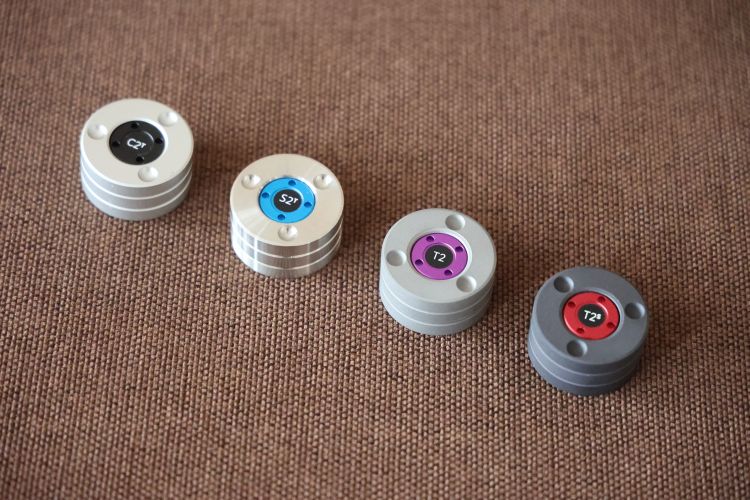
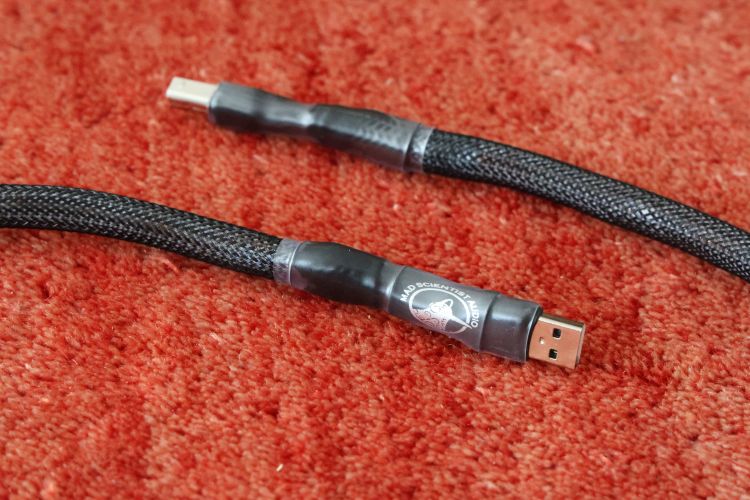
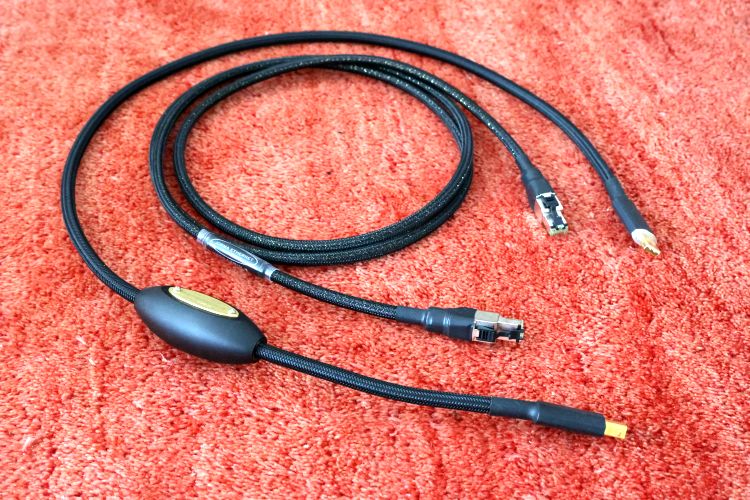
I have two of these units, placed after the Melco S10 network switch, one for my Apple TV 4K, and the second one for the Taiko Extreme server/streamer. I can confirm that they work very, very well. I could live without them.
Good afternoon,
I also have a Melco S10, with an Antipodes (ROON) server and separate streamer connected to it. I wonder if you can also place the muon pro Ethernet Filter in front of the Melco S10. Have you tried that too? Thanks for your response.
Sincerely,
Ed
Ed:
I haven’t tried puting the Muon Pro in front of the Melco S10, since the instructions which came with the Muon Pro recommended placing the filter as close as possible to the server/streamer (in my case, the Taiko Extreme), I assume to avoid picking up noise downstream. You’ve got me curious, though. Maybe it’s worth buying a third Muon Pro to place in front of the Melco S10.
Happy new year to start with! Question: since you are reviewing the Ansuz powerswitches, could you throw a comparison with the Muon filter in the mix too? And what about a complementary setup (feed the Powerswitches with the Muon filter prior placed). Precondition would be that you still have the Muon filter available 👍
Thanks!
Wasn’t it worth trying the Network Acoustics ethernet cable too?
Due to circumstances, I could not test it as part of this review.
Ok I understand. I already tested the Muon pro with my own Audioquest Vodka ethernet cable and I was wondering if NA’s own cable would be a worthwile upgrade…
Well, I did test the cable as part of the tempus switch review. In short, I can tell you that Ethernet cables can have a substantial influence, and the muon Pro Streaming cable is a different animal than the Vodka.
Il semble que vous avez branché le filtre Muon Pro du mauvais sens. Selon Network Acoustics, il faut brancher le câble intégré du Muon au streamer et non au routeur. Le Muon est unidirectionnel.
Well-spotted. The label was indeed attached in the incorrect direction for this sample. This was corrected in the later batches.